
From The Gut
137 is the inverse of
731. In northeast Asia, number 731 looms in the minds of many as being particularly ominous. The number 137, by chance or otherwise, is an equally powerful concern, although in a far less dark way, for a very different group of individuals. Are the two figures in any way related aside from their being chance numeric anagrams? To answer this we must first tell the strange tale of 137.
The number 137, more accurately expressed as one over 137, is primarily associated in physics with the value of the
fine-structure constant. I don't claim to be an expert on anything in this blog, least of all quantum physics. Specific information on what this term means mathematically can readily be found on the web, but it is not easily understood. As usual I'm interested more in the metaphorics of it all.

There are simpler ways, though, to get some idea of what the fine-structure contant refers to. Here's a bit of
explanation:
This number actually represents the probability that an electron will absorb a photon. However, this number has more significance in the fact that it relates three very important domains of physics: electromagnetism in the form of the charge of the electron, relativity in the form of the speed of light, and quantum mechanics in the form of Planck's constant. Since the early 1900's, physicists have thought that this number might be at the heart of a GUT, or Grand Unified Theory, which could relate the theories of electromagnetism, quantum mechanics, and most especially gravity.
The above quote gives some indication why 137 became such an obsession for many physicists. It's an obsession that comes from the GUT.
Max Born reveals the stakes involved in this number:
If alpha [the fine structure constant] were bigger than it really is, we should not be able to distinguish matter from ether [the vacuum, nothingness], and our task to disentangle the natural laws would be hopelessly difficult. The fact however that alpha has just its value 1/137 is certainly no chance but itself a law of nature. It is clear that the explanation of this number must be the central problem of natural philosophy.

The significance of 1/137 (also expressed by its reciprocal -- approximately 137) was discovered in 1916 by Arnold Sommerfeld who assigned this new constant the Greek letter,
Alpha. This first letter of the
alphabet, alpha in Greek or alef in Hebrew, has tremendous esoteric importance, perhaps best illustrated by Jorge Borge's short
story. Alpha is the perfect symbol for a number that many physicists believe could be a bridge between matter and ether, being and nothingness. Richard Feynman was one of these scientists. From his book
QED: The Strange Theory of Light and Matter:
It has been a mystery ever since it
was discovered more than fifty years ago, and all good theoretical
physicists put this number up on their wall and worry about it.)
Immediately you would like to know where this number for a coupling
comes from: is it related to pi or perhaps to the base of natural
logarithms? Nobody knows. It's one of the greatest damn mysteries of
physics: a magic number that comes to us with no understanding by man.
You might say the "hand of God" wrote that number, and "we don't know
how He pushed his pencil." We know what kind of a dance to do
experimentally to measure this number very accurately, but we don't know
what kind of dance to do on the computer to make this number come out,
without putting it in secretly!

The physicist most associated with the number 137 preceded Feynman by a generation. Wolfgang Pauli was not only convinced of the number's role in finding a unified theory of physics, but he came to believe that it was a key to unlocking the secret of the human mind's interaction with the physical world. Writer Arthur Miller, in his
Deciphering the Cosmic Number: The Strange Friendship of Wolfgang Pauli and Carl Jung, succinctly relates the number's importance for Pauli:
Pauli once said that if the Lord allowed him to ask anything he wanted, his first question would be “Why 1/137?
As a brilliant young physicist, though, Pauli was not free of problems. In fact, his life was falling apart. He came to
realize that he could not solve these personal difficulties by himself.
In his physics, Pauli sought a unified field. But his personal life was one of
fragmentation and dissociation. Within one year, his mother poisoned herself in reaction to his father’s involvement in an affair, and Pauli plunged into a brief marriage with a cabaret performer. At thirty, he turned to Jung for help.

Three And Four
Upon meeting Pauli, Jung was quickly able to
assess the young scientist's psychology. Pauli was a hard-nosed rationalist who was unable to express, in Jung's terms,
feeling.
I had a case, a university man, a very one-sided intellectual. His unconscious had become troubled and activated; so it projected itself into other men who appeared to be his enemies, and he felt terribly lonely because everybody seemed to be against him. Then he began to drink in order to forget his troubles, but he got exceedingly irritable and in these moods he began to quarrel with other men. . . and once he was thrown out of a restaurant and got beaten up.
Jung identified four basic cognitive functions --
thinking,
feeling,
sensing and
intuition. To simplify, a person's psyche achieves optimal health when these functions are more or less in balance. Jung came to realize that this fourfold view of the psyche meshed perfectly with traditional conceptions of a similar fourfold division of reality.
![[redbook2]](http://si.wsj.net/public/resources/images/ED-AL497_redboo_DV_20100511175520.jpg)
Arthur Miller, in an entertaining
presentation about his book at CERN, very skillfully lays out the relationship between Jung and Pauli. Miller explains that Jung's summation that Pauli was suppressing one of the four functions -- feeling -- went on to have a profound influence on Pauli's own research.
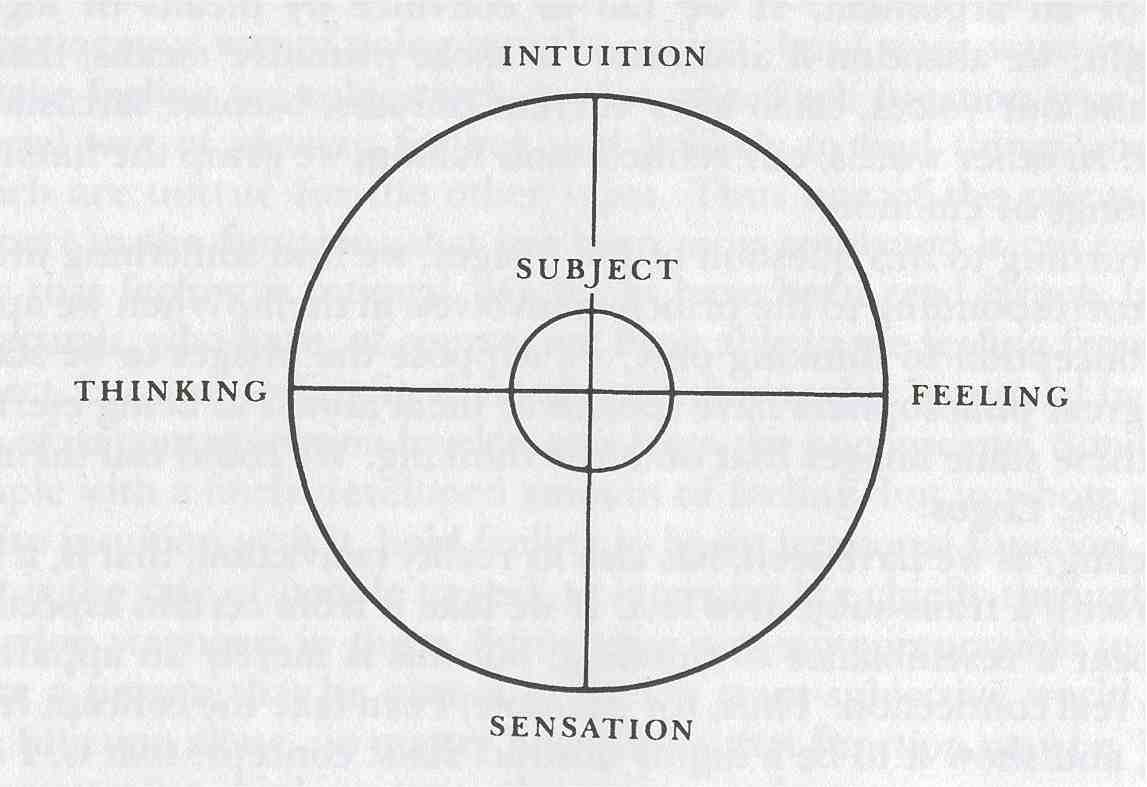
Pauli was a follower of Johannes Kepler, whose own scientific work was highly influenced by the Christian doctrine of the Trinity. Jung convinced Pauli that this emphasis on the number three was psychologically incomplete. It lacked the fourth, primarily female, element that Pauli was burying deeply in his unconscious. This had parallels with Pauli's development of the exclusion principle in physics.
During his time in psychoanalysis with Jung, Pauli was struggling with a question in quantum physics that Pauli ultimately resolved with the
Exclusion Principle. This states:
no two electrons in an atom can have the same four quantum numbers. Miller strongly suggests that it was Jung's influence on Pauli that enabled the latter to make this breakthrough by his positing a fourth quantum number
. This is hinted in one of Pauli's letters, cited by Miller:
Thus, on the psychological line this time I have once again bumped
into the problem of the transition from three to four. In neither case
was it by any means Mr. C.G. Jung who suggested it to me, nor was there
an advance conscious intention down. Consequently I am rather certain
that objectively there is an important psychological and, perhaps,
natural philosophical problem connected with these numbers.
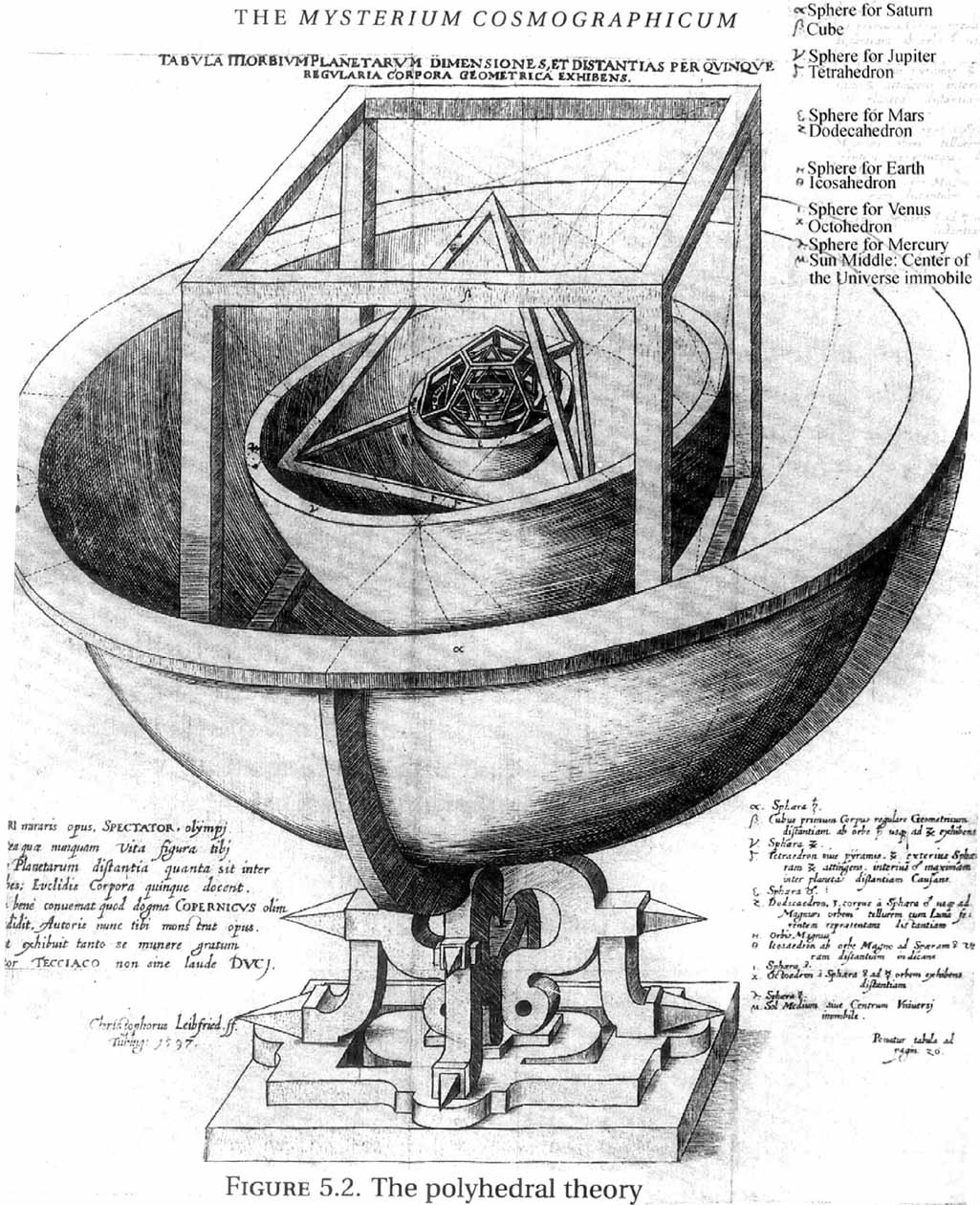
Jung's sessions with Pauli largely consisted in the analysis of the physicist's dreams. Pauli, despite or perhaps
because of his rationalism, was a prolific dreamer and was able to present hundreds of these nighttime visions to Jung. Jung, in turn, was delighted by the dreams and wrote about many of them, strictly maintaining Pauli's anonymity, in various books. In
Psychology and Alchemy, Jung wrote about what is now Pauli's most famous dream -- the vision of the "
World Clock."
This
remarkable vision made a deep and lasting impression on the dreamer, an
impression of "the most sublime harmony," as he himself puts it...
It is a three-dimensional mandala — a mandala in bodily form signifying
realization.
For Jung this dream signified that the process of individuation was complete. Jung found that during prolonged psychoanalysis patients who were able to bring suppressed aspects of their psyche to light and in balance with the whole almost inevitably experienced dreams or visions of a circle or mandala. In his research, Jung discovered that the same symbol of the mandala contained this identical meaning in cultures across the globe. He realized that the mandala is the archetype of psychic wholeness. Pauli's "
great vision" indicated that his psyche was finally integrated.
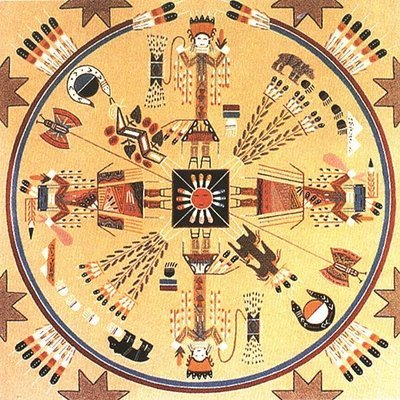
Encountering Yourself
I'll return to a full description of Pauli's dream, which also shows a reconciliation of the three and the four, as this story unfolds. The important point for now is to know that the relationship between Jung and Pauli did not end after the latter had been "cured." In fact, it deepened. The patient became collaborator. Both realized that the other was the perfect partner in exploration of what each most wanted to know -- what is the precise relation between mind and matter? It quickly became apparent to the two that central to this question was the phenomenon of
synchronicity.
Synchronicity, as a firm concept, did not really occur to Jung
until around 1929. It is remarkable that the development of this idea a
year later coincided with the appearance of a new patient, the brilliant
young physicist, Wolfgang Pauli. The relationship that grew between
Jung and Pauli is remarkable and well worth the telling, for it
illustrates how scientists of that period were willing to entertain
Jung's ideas about synchronicity, archetypes, and the collective
unconscious, and even attempt to extend them into their own fields.
Pauli wanted to know how psychology affected physics and Jung was interested in the physics of psychology. Recently such inquiries are dismissed by most scientists as the obsessions of cranks, but at the time Jung and Pauli were at the top of their respective fields. It would not be until 1952 with his paper "Synchronicity: An Acausal
Connecting Principle," which was originally published in Germany along with an essay by Pauli on archetypes in the work of Kepler, that Jung published his extensive views on synchronicity, influenced massively by Pauli.

Through their decades of collaboration, Jung and Pauli came to be convinced that synchronicity points to a basic unity of the subjective and the objective, of mind and matter. In a chapter, "Science and the Unconscious," of
Man And His Symbols the student and colleague of Jung, Marie-Louise von Franz, explains that other scientists beyond Pauli were also interested in these questions.
When examining
nature and the universe, instead of looking for and finding objective
qualities, "man encounters himself," in the phrase of physicist Werner
Heisenberg.
Because of the implications of this
point of view, Wolfgang Pauli and other scientists have begun to study
the role of archetypal symbolism in the realm of scientific concepts.
Pauli believed that we should parallel our investigations of outer
objects with a psychological investigation of the inner origin of our scientific concepts.

Von Franz quotes from Pauli who, several decades before
What the Bleep Do We Know!? and even
The Tao of Physics, far more credibly challenged the idea of scientific objectivity:
The science of microphysics, on account of the basic
'complementary' situation, is faced with the impossibility of eliminating
the effects of the observer by determinable correctives and has
therefore to abandon in principle any objective understanding of
physical phenomena. Where classical physics still saw 'determined casual
laws of nature' we now look only for 'statistical laws' with 'primary
possibilities.'
Beyond just this, however, von Franz concludes her essay with what was really on the minds of both Jung and Pauli -- the possibility of a unified theory of mind and matter.
The unexpected parallelisms of ideas in psychology and physics suggest, as Jung pointed out, a possible ultimate one-ness
of both fields of reality that physics and psychology study -- i.e., a
psychological one-ness of all life phenomena . . . The concept of a
unitarian idea of reality (which has been followed up by Pauli and Erich
Neumann) was called by Jung the unus mundus (the one world, within
which matter and psyche and are not yet discriminated or separately
actualized). He paved the way toward such a unitarian point of view by
pointing out that an archetype shows a "psychoid" (not purely psychic
but almost material) aspect when it appears within a synchronistic
event -- for such an event is in effect a meaningful arrangement of inner
and outer facts.

Wheeling And Dealing
The real goal is the discovery of the
unus mundus. All synchronicity directs us towards this. But what part does the number 137 play in this realization? A
paper on Jung and integral theory by Giorgio Piacenza Cabrera asks the same question and suggests a plausible answer:
If archetypes do exist in the Jungian sense and they possess a 'psychoid' aspect capable of 'organizing the fundamental principles of
matter and energy in the physical world' what would the role of 1/137
be? Perhaps that of a 'master, coordinating archetype,' resting in an
even deeper level (perhaps more psychic than physical) than that of the
average archetype?
This idea of a number, especially one as significant as 137, as being a "
master, coordinating archetype" is not at all contrary to the thought of Jung or Pauli. It very much agrees with them. Pauli
wrote of the "Pythagorean" view of number that is found in the work of his own hero, Kepler.
I was well
aware, as a pupil of Sommerfeld’s [who discovered the 1/137 constant], how these Pythagorean elements
appearing in Kepler retain their vitality even today. That ancient
spiritual ‘dynamics’ of number is still active, which was formerly
expressed in the ancient doctrine of the Pythagoreans that number are
the origin of all things and as harmonies represent unity in
multiplicity.

Cabrera also cites Jung's similar idea on the qualitative significance of numbers, and how 137 may be the ultimate representative of these number archetypes:
Jung
often refers to the old familiar saying: “in the Olympus numbers reign”.
Following this pattern, we regard the supreme ruler of number
archetypes the specific formula introduced for fine-structure constant.
Archetypal numbers also prominently feature in Pauli's world clock dream. This is seen in the description of the dream which Jung provides in
Psychology and Alchemy:
The "Great Vision":
There is a vertical and a horizontal circle, having a common centre. This is the world clock. It is supported by the black bird.
The vertical circle is a blue disc with a white border divided into 4 X 8 -- 32 partitions. A pointer rotates upon it.
The
horizontal circle consists of four colours. On it stand four little men
with pendulums, and round it is laid the ring that was once dark and is
now golden (formerly carried by four children). The world clock has
three rhythms or pulses:
1) The small pulse: the pointer on the blue vertical disc advances by 1/32.
2) The middle pulse: one complete rotation of the pointer. At the same time the horizontal circle advances by 1/32.
3) The great pulse: 32 middle pulses are equal to one complete rotation of the golden ring.

The numbers three and four are key to this vision. The vertical wheel is connected to Pauli's rationalist emphasis on the number three, and the horizontal wheel, with its four divisions and figures, represents the integrated psyche. Together they form a complex but balanced mandala.
Jung was always careful not to suggest interpretations to his client's dreams, letting them come to their own conclusions. This was also the case with this particular dream by Pauli. While Pauli realized its enormous personal significance, it was Jung who was
struck by its similarity to the great vision of Ezekiel.
I have always been particularly interested to see how people, if left to their own devices
and not informed about the history of the symbol, would interpret it to
themselves. I was careful, therefore not to disturb them with my own
opinions and as a rule I discovered that people took it to symbolize
themselves or rather something in themselves. They left it as belonging
intimately to themselves as a sort of Creative background, a
life-producing sun in the depths of the unconscious mind. Though it was
easy to see that it was often almost a replica of Ezekiel’s vision, it
was very rare that people recognized the analogy, even when they knew
the vision which knowledge, by the way, is pretty rare nowadays.

Jung's linking of Pauli's World Clock with Ezekiel's Merkabah vision will take on greater importance as this narrative deepens. This blog has already
examined the comparison of the vision of Ezekiel with the revelation of Beatrice to Dante at the summit of Mount Purgatory. Another connection with past studies is how Pauli's World Clock has obvious numerical ties to
432 (or 4 and 32). In addition to 432, though, it should be no surprise that Pauli's symbol of psychic wholeness is directly related to the number he was most intrigued by, 137.
This is summed up in a very fascinating
paper by Valarki Nadai Bokor:
From
the Pauli–Jung letters it is clear that the black bird is supported by
the female symbolic figure of anima, where anima is suited with number
‘7’. In this way the black bird (1), the rotating discs and ring (3),
and the figure of anima (7) altogether associates to number ‘137’.
Furthermore,
the temporal structure (rotation scale) itself is double 32, and the
spatial structure is also evidently 2 × (32 + 4) (the four little men
with pendulums -- horizontal disc, and four cardinal positions of
pointers – vertical disc), that altogether results in 1 + 2 × 32 + 2 ×
36 = 137.
A more obviously synchronistic link to 137 comes with Jung's original account of this "Great Vision" in
Psychology and Alchemy. The number of the footnote referring to this account is, by design or otherwise,
137!
Smashed Jugs
Both Jung and Pauli quickly came to realize that this number's mysterious qualities went well beyond the realm of physics. An often cited conversation between Victor Weisskopf, at one time an assistant to Pauli, and Gershom Scholem, the revered scholar of Jewish mysticism, brings this out
clearly.
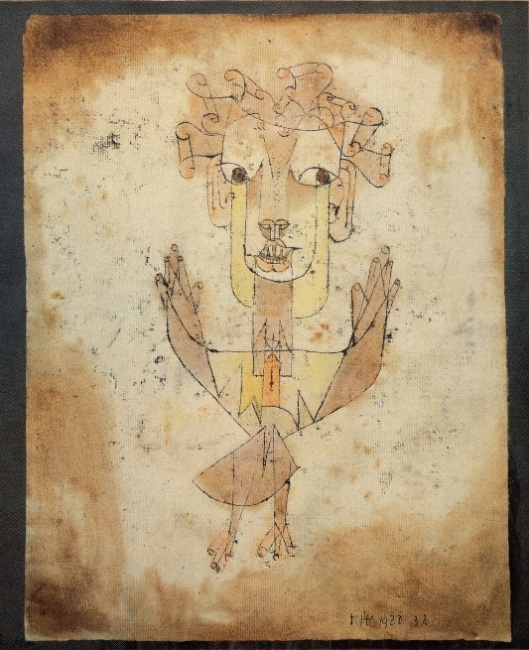
When Scholem met Weisskopf, he asked about the prominent unsolved problems in physics. Weisskopf said, “Well, there’s this number, 137...” And Scholem’s eyes lit up! He said, “Did you know that one hundred thirty-seven is the number associated with the Cabala?”
By this, Scholem meant that the number values of the four Hebrew letters making up the word
קבלה, or
kabbalah (
he=5,
lamed=30,
beth=2,
qoph=100), sum to 137. This association of the Kabbalah with 137 is still very prominent. We see this in an article on number 137 by a member of the Kabbalah Centre, an organization made famous by Madonna and other celebrity members and discussed
earlier in this blog.

Billy Phillips
writes about a discussion he had with the controversial rabbi and director of the Kabbalah Centre, Phillip Berg, on the mystical significance of the number 137:
The number 137 in physics corresponds to the interaction between an electron
and a photon or the probability of an electron absorbing a photon. In the
language of Kabbalah, it means the interaction between the Vessel and the Light
or how a Vessel can absorb/receive the Light. We know that we are distanced and
disconnected from the Light when we are opposite in nature because in the realm
of consciousness or spirituality, opposites repel. The only way for our
physical world (electron) to absorb (receive) the Light is to imitate
the Light, behave like the Light, and that stops repulsion. In
turn, it causes attraction.
Phillips stresses the same role of 137 as a bridge between matter (the Vessel) and mind or spirit (the Light) as was emphasized by Jung and Pauli. It may be that the Kabbalah (as 137) was "designed" to also be this bridge. The Kabbalah Centre is mainly focused on personal development (and it is often criticized by traditionalists), but it is clear that Phillips through Berg is presenting a highly simplified doctrine that is most notably found in the teachings of the 16th century Jewish mystic, Isaac Luria.

Two interrelated concepts emerge out of Lurianic Kabbalah that have direct bearing on Phillips' article and the number 137. These two concepts are known as
Shevirat Ha-Kelim -- the "Breaking of the Vessels" and
Tikkun -- the "restitution of a defect." These correspond to the Fall and Redemption on a truly cosmic scale.
Luria's teaching describes a complex process whereby, grossly simplified, the original, divine Light emanated out from
En Sof, filled the body of the primordial, universal Man -- Adam Kadmon, burst out from his senses and began to flow into the ten Sefiroth of the Tree of Life. In
Major Trends in Jewish Mysticism, Gershom Scholem explains what happened next:
Since, however, the divine scheme of things involved the creation of finite beings and forms, each with its own allotted place in the ideal hierarchy, it was necessary that these isolated lights should be caught and preserved in special ‘bowls’ created – or rather emanated – for this particular purpose. The vessels which corresponded to the three higher Sefiroth accordingly gave shelter to their light, but when the turn of the lower six came, the light broke forth all at once and its impact proved too much for the vessels which were broken and shattered. The same, though not to quite the same extent, also occurred with the vessel of the last Sefirah.
This, long before the earthly Adam or even Lucifer, was the original Fall. It became embedded into the fabric of reality. Fortunately or unfortunately, though, Luria viewed humanity as still being at the centre of the drama. The bowls or vessels had been broken, but the restitution or restoration of the Light to its rightful place is the task of us all.

The task of man has been defined by Luria in a simple but effective way as the restoration of his primordial spiritual structure or Gestalt. That is the task of every one of us, for every soul contains the potentialities of this spiritual appearance, outraged and degraded by the fall of Adam, whose soul contained all souls. From this soul of all souls, sparks have scattered in all directions and become diffused into matter. The problem is to reassemble them, to lift them to their proper place and restore the spiritual nature of man in its original splendor as God conceived it.
This task is both individual and collective, mundane and cosmic. Each soul or psyche contains the sparks, mired in matter, which trace their filaments or cilia of light back to pure Spirit. Is 137, the master number archetype of this process, the key to
Tikkun? As a metaphor, and at risk of bastardizing both quantum physics and the Kabbalah, this can be accepted. It is the bridge of mind and matter, the fine-structure constant, the restorative essence of the Kabbalah.

Phillips takes it back to the personal. As such a bridge, it is most readily related to individual consciousness.
The missing puzzle piece for physics is consciousness. Only by way
of consciousness can we absorb and connect to the Light in a lasting and
permanent way. How? When we first admit and recognize that our ego is a distinct
and separate force of consciousness (often that takes lifetimes), and then we
strive to remove it, so that we share, instead of only receive, we then unite
with the Light. In other words, the Light is the Cause of Happiness.
Therefore, when we become the cause of someone else’s happiness, we are
identical to the Light.
I could easily and justifiably get accused here of over-simplifying and/or misrepresenting Lurianiac Kabbalah, but in any case Scholem's research makes it clear that these beliefs are far older than the Kabbalah. The idea the the divine light became trapped in matter after a cosmic Fall is recognizably Gnostic. It is likely even more ancient than Hellenistic Gnosticism or Neoplatonism. Platonism, in general, has a very similar philosophy. And from Plato it can be traced back through Homer to even older sources.

In any case, Luria's philosophy is, I feel, uniquely profound.
Tikkun is occurring on personal and cosmic levels. The reverse process is also still in effect. The ego is the usual means by which an individual buries the sparks of his soul even deeper. The selfish, self-limiting ego is an expression of the dysfunctional psyche. The sparks that Pauli was burying were linked to his inability to feel. 137 was for him a symbol of psychic wholeness.
Phillips corresponds the number 137 to the structure of Tree of Life itself. Whether or not this is philosophically legitimate, as a metaphor it is once again very powerful. In his article he includes the following graphic:

The fascinating point about this graphic, for the purposes of this post, is that the one, three and seven of 137 are shown descending from En Sof to the lower Sephirot. If we reverse this number we get 731 in ascent to the "Endless World." The three numbers can be combined and read in both ways.
Nymphomania
What is the significance of ascent and descent? 137 could represent, as suggested above, the descent of light into matter. In that case its inverse, 731, would represent the ascent of matter into the light -- or the capture of light by matter.
It is easy, though, to reverse the two. 731 depicts the restoration of light while descending 137 shows its original fall into matter. Ultimately it might be of little importance which interpretation we accept. A lightning strike, a common image in the Kabbalah, is an electric charge that simultaneously travels from the sky to the ground and from the ground up to the sky. Are the Fall and Redemption occurring at once?

Another poetic image perhaps symbolizing the same thing is found in the
Odyssey. In the 13th Book of Homer's epic, the poet writes of Odysseus' final return to the island of Ithaca. Homer describes a cave near the harbour where Odysseus is later able to stash his treasure. The most defining feature of this "
Cave of the Nymphs" is that it has two openings or doors -- one to the north where mortal humans may descend and one to the south through which only immortals are able to make their ascent.
High at the head a branching olive grows
And crowns the pointed cliffs with shady boughs.
A cavern pleasant, though involved in night,
Beneath it lies, the Naiades delight:
Where bowls and urns of workmanship divine
And massy beams in native marble shine;
On which the Nymphs amazing webs display,
Of purple hue and exquisite array,
The busy bees within the urns secure
Honey delicious, and like nectar pure.
Perpetual waters through the grotto glide,
A lofty gate unfolds on either side;
That to the north is pervious to mankind:
The sacred south t'immortals is consign'd.
What exactly Homer meant to signify by these two gates has been a subject of speculation in Greek philosophy since at least the time of Plato. The most thorough study of this topic, though, was
presented by the 3rd century Neoplatonic philosopher, Porphyry, in his
On the Cave of the Nymphs in the Thirteenth Book of the Odyssey.

Porphyry deeply explores the symbolism of every detail in this passage, but just a few of these insights will suffice here. Porphyry explains that the north and south gates may represent Cancer and Capricorn respectively. Souls are able to descend to this world through the gate at Cancer and ascend, if they become immortal or purified, through the gate at Capricorn. Mixing metaphors, at the north gate the sparks of light (the soul) fall into matter and at the south gate the sparks are released and return to their source.
Theologists therefore assert, that these two gates are Cancer and Capricorn; but Plato calls them entrances. And of these, theologists say, that Cancer is the gate through which souls descend; but Capricorn that through which they ascend. Cancer is indeed northern, and adapted to descent; but Capricorn is southern, and adapted to ascent. The northern parts, likewise, pertain to souls descending into generation. And the gates of the cavern which are turned to the north are rightly said to be pervious to the descent of men; but the southern gates are not the avenues of the Gods, but of souls ascending to the Gods.

Porphyry later turns his attention to the "
bowls and urns" within the cave which he also associates with human souls. In a passage that reads very much like the teachings of Luria, he cites Plato and Hesiod and writes of souls being "
tubs" or "
vessels" which at times have their contents scattered and becoming "
dispersed about matter":
But Plato in the Gorgias by tubs intends to signify souls, some of which are malefic, but others beneficent; and some which are rational, but others irrational. Souls, however, are (analogous to,) tubs, because they contain in themselves energies and habits, as in a vessel. In Hesiod, too, we find one tub closed, but the other opened by Pleasure, who scatters its contents everywhere, Hope alone remaining behind. For in those things in which a depraved soul, being dispersed about matter, deserts the proper order of its essence, in all these it is accustomed to feed itself with (the pleasing prospects of) auspicious hope.
This similarity of Luria to Porphyry supports Scholem's research on the Neoplatonic and Gnostic sources of the Kabbalah. Regardless of whether true parallels can be made between these very different systems of thought, we can continue the exploration of these numbers as potent and transformative
metaphors.
Daimonic Possession
731, in its unfortunate connection with Unit 731, can be viewed to represent the ultimate Fall -- what Blake termed the "
limit of opacity." Within Unit 731, and other similarly hideous centres of torture and experimentation on humans, the full depravity of material descent is shockingly revealed.

The episodes related to this unit in the
X-Files accurately elaborate and extend this metaphor. The inhuman practices of Unit 731 are linked in the show to the most nightmarish accounts of the alien abduction phenomenon. It is not really a stretch of the imagination to conclude that the ultimate aim of such facilities is the unholy creation of a hybrid of the human and the demonic. This would represent the irretrievable capture of the Light by Matter.
In the research of Yeats and others, though, this blog has shown that these "intermediate" beings are not necessarily demonic or evil in character. Yeats called them by an older and more neutral or ambiguous term -- the "daimon." The nymphs or Naiades of Homer's cave are certainly daimons. Fairies are likewise daimons and, in more recent decades, the UFO and space alien definitely fit the bill.
In the cave in Ithaca (Blake's "
mundane egg"), mortals could descend through one gate and immortals ascend through another. Presumably, though, the nymphs could travel back and forth through both. This is the unique characteristic of the daimon.
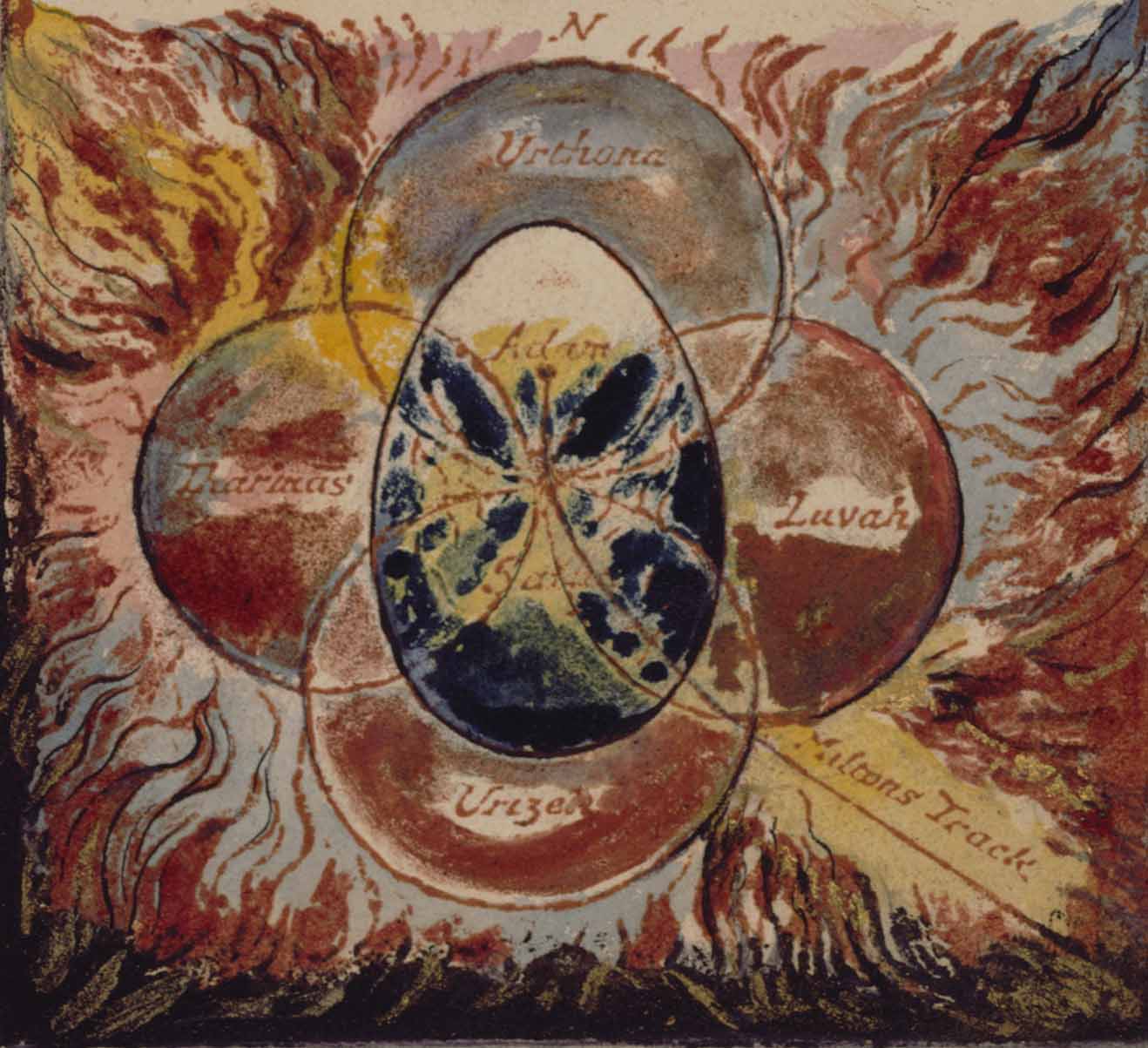
Archetypes, themselves, contain this trait and the archetypes of number especially so. Daimons like archetypes are "psychoid" in nature. In addition to the word "Kabbalah" having the value in gematria of 137, the Hebrew word for "wheel" (
owphan or אופן )
in the
Book of Ezekiel also has a value of 137.
Now as I beheld the living creatures, behold one wheel upon the earth by the living creatures, with his four faces. (Ezekiel 1:15)
Many ufologists take Ezekiel's vision as an early documented UFO encounter. The "wheel" in a sense is the UFO. By analogy, then, the UFO is the number 137. Pauli's dream of the World Clock, compared by Jung to Ezekiel's vision, is an encounter of the UFO, of the mandala, of 137. This uncanny number also has the gematria value for the word "crucifix," a word which has obvious relation to the threshold of the divine and the human. 137 additionally is the 33rd prime -- 33 including the 32 paths of the Tree and the path beyond to the Ultimate.
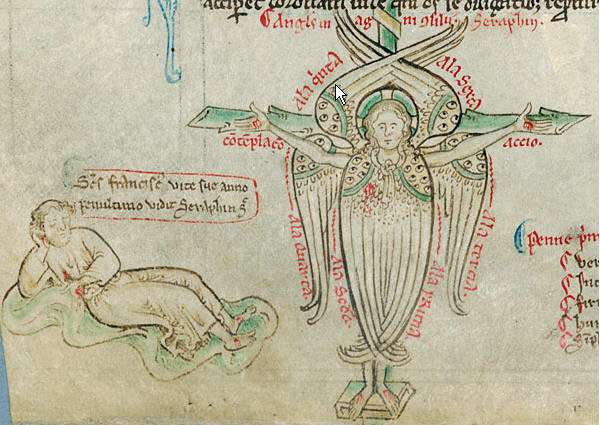
The number 137 now holds the fascination of those far outside of the field of physics. UFO researchers, Trish and Rob MacGregor, have written extensively on their their
blog about the number and synchronicities involved with it. It does not seem surprising that individuals studying the UFO would also come under the spell of 137.
A far deeper level of inquiry, bordering on outright mania, into 137 is found on various
forums on the web with mind-warping contributions from a number of researchers. One of the most outstanding of these is called Raphael. Everything written here, with the possible exception of its relation with 731 -- the main point of the post, would likely appear as very elementary to Raphael. Of the many connections he makes to 137, a fact about Noah's Ark is very relevant to this discussion.
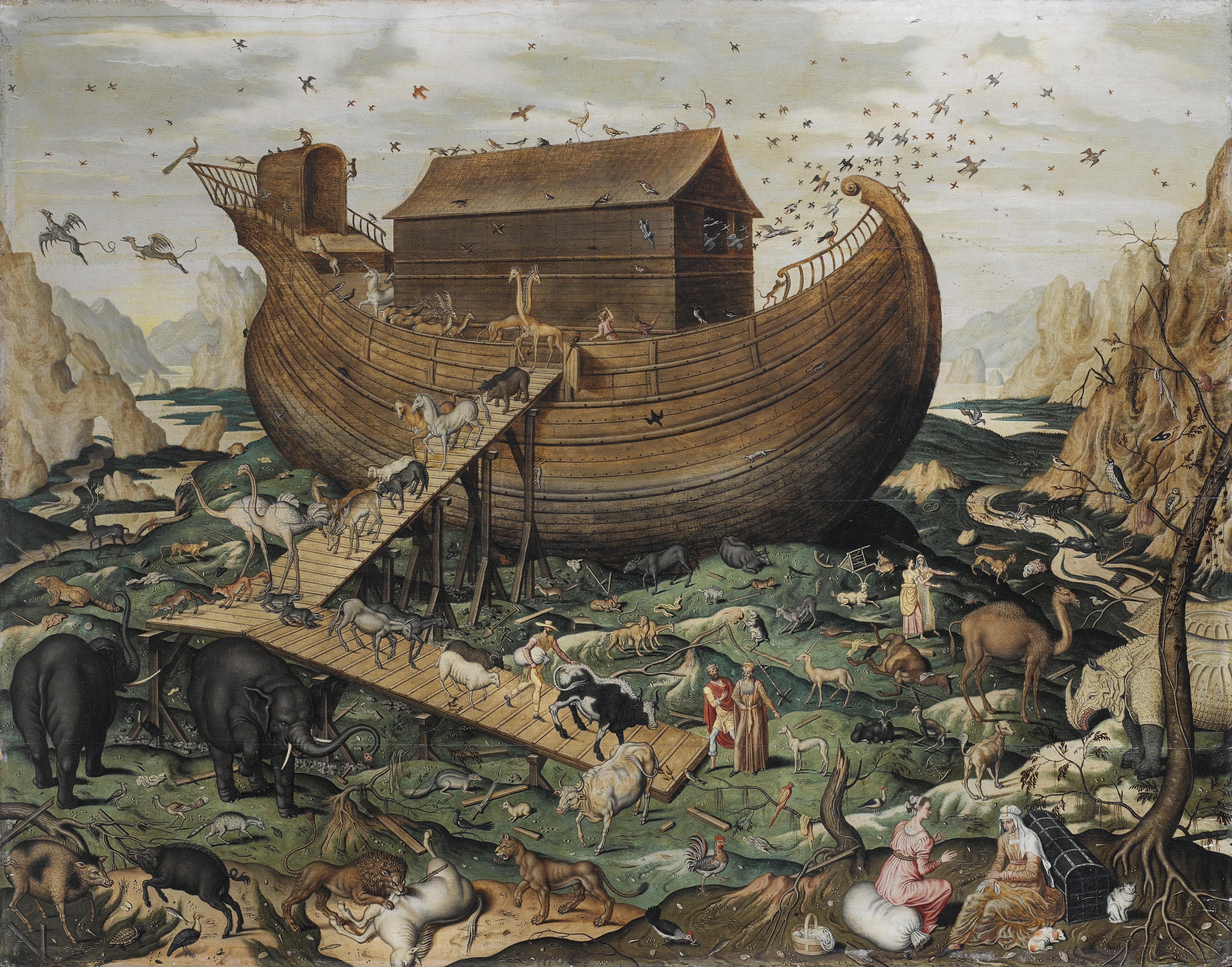
Raphael notes that the Ark, when its measurements are converted into metric, is approximately 137 metres in length. This matches the symbolism explored in this post. The Ark was the threshold between two ages. It, like the UFO, moves from one world/age to the next. As remarked in a previous
post, the occultist A. E. Waite explains that the Ark has been connected to the Ark of the Covenant.
The Zohar says that the Ark of Noah was a symbol of the Ark of
the Covenant, that his entrance therein saved the world, and that this
mystery is in analogy with the Supreme Mystery.
The Ark of the Covenant is also a threshold vessel -- it allowed for communication between God and humanity. Both Arks act as daimons, and number 137, as well as its inverse 731, could be used to represent these transportive devices. Numbers, as Jung and Pauli believed, can also act as daimons. Patrick Harpur, in
The Philosophers' Secret Fire, explains that this idea was actually quite common during the Renaissance:
Maths and numerology were the same thing. Numbers were Pythagorean
personalities -- "perfect" or "friendly", for instance, or even
Unutterable (alogon). They were daimons (or inseparable
properties of the daimons they were used to invoke), which manifested a
"mervaylous neutralitie" between the sensory and super-celestial worlds.

137, as a "
master, coordinating archetype," as a bridge between mind and matter, as synchronicity expressed as number, is certainly this type of numeric daimon. Its inverse, 731, is likewise such a daimon. Together they represent the two gates of the Cave, the ascent and descent of the Tree. And like all daimons they revel in ambiguity. The may lead us up to the heights of enlightenment and understanding, seeming to provide an answer for everything, or they may mire us into the depths of dark conspiracy and inhuman manipulation.
These two numbers, opposites or warring
brothers, may also, along with similarly uncanny numbers such as 23, 42, 108 and 432, remain a mystery. People will know that they are important but, like Feynman, have no real idea why.

It would be a mistake to characterize 137 as "good" and 731 as "bad." They can easily flip roles. Up and down are very often confused. The recent appearance of 731 in the news helped us all to remember, and thus be less likely to repeat, a particularly dark chapter in our history. And 137, in addition to the obsession it surely causes, eventually became ominous even to Pauli.
The Return To Poetry
In December of 1958, Pauli was brought to the Red Cross Hospital in Zurich for treatment of pancreatic cancer. When his assistant came to visit him Pauli, in a haunted tone, asked him if he saw the number on the door of his room. The number was 137. Pauli was convinced that he would not escape from this room alive. He didn't.
Pauli died in room 137. In this case the number is cast in a sinister light. Like 731, associated with torturous experiments performed on live victims, it mediates between life and whatever, if anything, follows after it.
This whole line of thinking is almost instantly dismissed by many. While making his presentation at CERN, author Arthur Miller responded to a cynical "question" by just this type of smug, self-styled "skeptic" -- what Christopher Knowles aptly calls a "
skepdick" -- on Pauli and Jung:
It's a little bit disturbing to hear that a great hero of physics
like Pauli believed in nonsense like Jungian psychology... Can I propose
an alternative theory? This is an irascible man who has very few
friends and there is another man who has a professional desire to spend a
lot of time with him and so Pauli says I can put up with this nonsense
if I can talk with somebody for a few hours a day.

Miller was quickly able to trash this "theory," replying that the situation was "
not like that at all." Miller explained how Pauli had many friends and pointed out that even before meeting Jung, Pauli was deeply interested in the Hermetic speculation of the great Kepler.
"Skepdick" reductionism, as shown above, is definitely on the rise. The present widespread acceptance of this dogma shows how far our culture is from embracing the vision shared by thinkers like Jung and Pauli on the possibility of a unified science of matter and mind. The reality of Jung's
unus mundus is accepted by many today, although mostly as a watered-down, feel-good, New Age bromide, but there is little serious research on the topic, at least that is widely publicized, within science.
I've wondered before on this
blog if it is the scientific method itself that has reached its limit. What goes on inside of the psyche, individually and collectively, cannot entirely be measured objectively. Like the daimon, the contents of the psyche resist categorization. Things unaccountably flip to their own opposites. Immortal becomes mortal. Ascent becomes descent. 137 becomes 731.
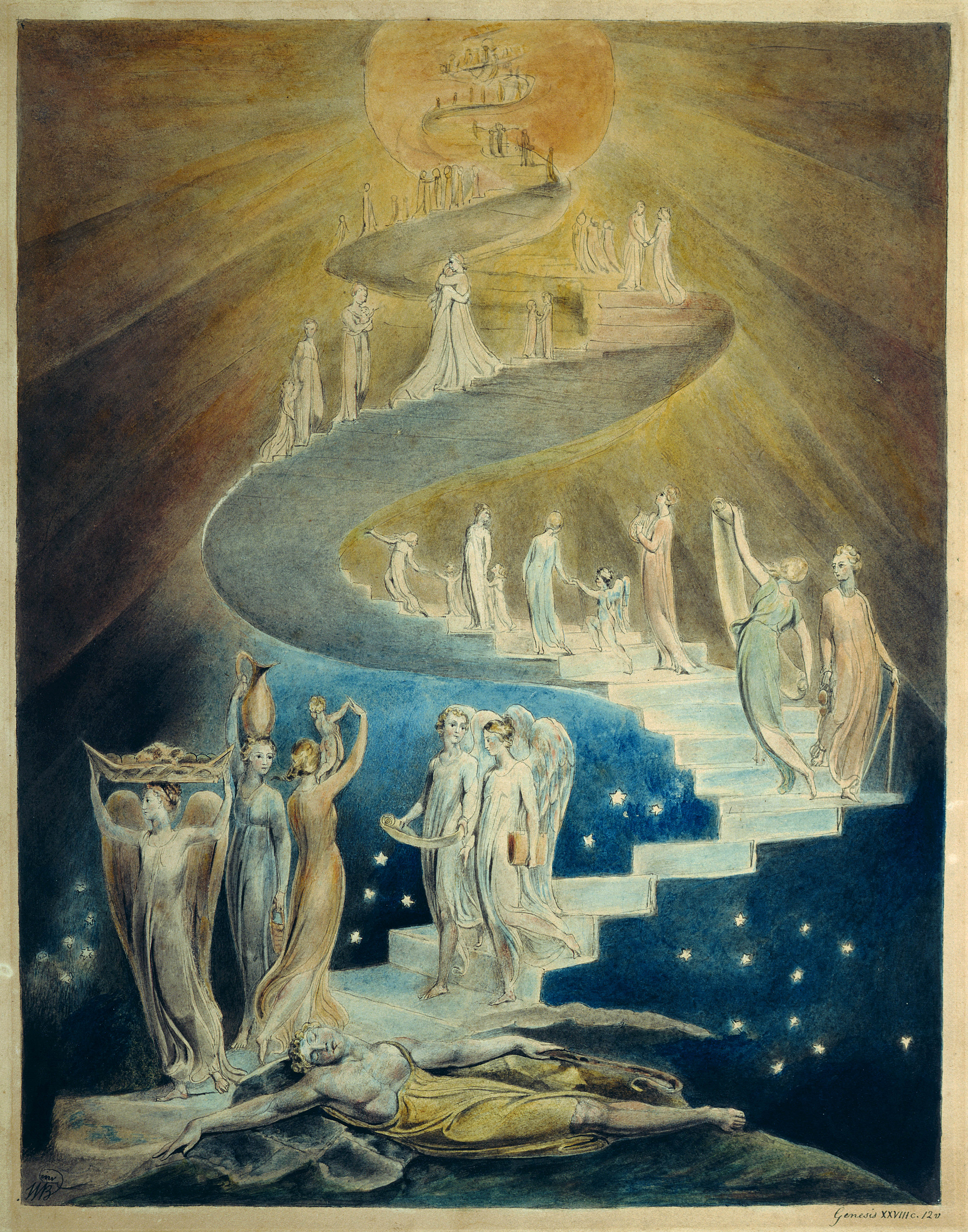
It's clear that Jung and Pauli believed that they were approaching something that combined and transcended both psychology and physics. It was a vision that obsessed them and, for Pauli at least, took a negative turn in the end. W.B. Yeats suggested that it was the tradition of epic poetry, tapping into the timeless stream of human mythology, that could best manifest the unified vision. Yeats also contacted the daimons for inspiration, aspects of the psyche or not, but he was not haunted by numbers.


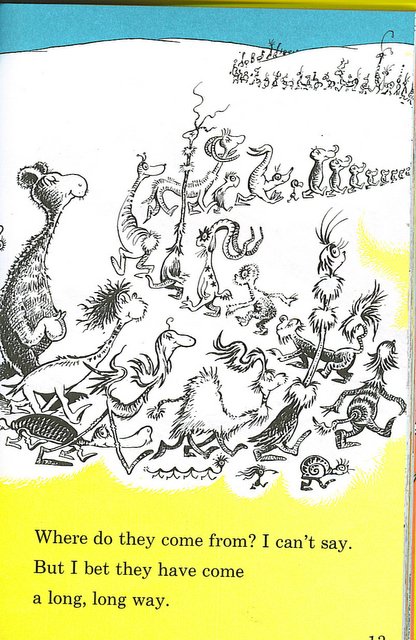





![[redbook2]](http://si.wsj.net/public/resources/images/ED-AL497_redboo_DV_20100511175520.jpg)


























